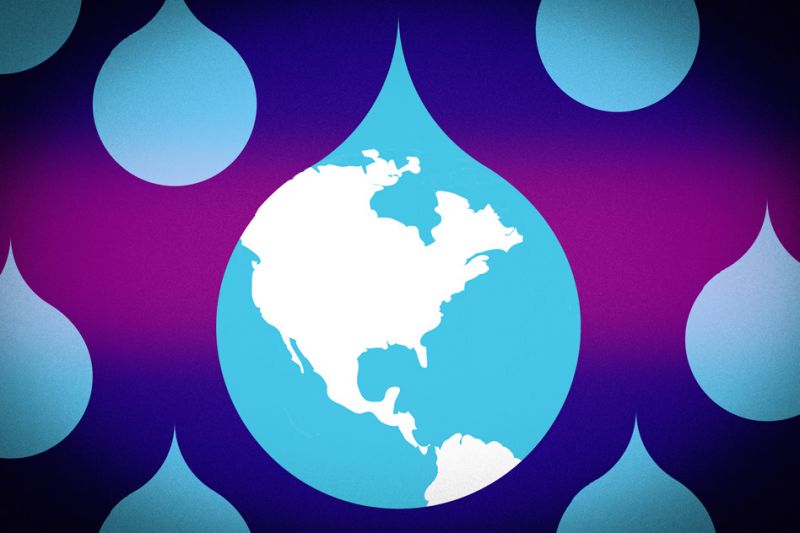Climate Change to Deplete US Water Basins and Reduce Crop Yields
Published on by Water Network Research, Official research team of The Water Network in Academic
A new study by MIT climate scientists, economists, and agriculture experts finds that certain hotspots in the country will experience severe reductions in crop yields by 2050, due to climate change’s impact on irrigation.

“In the Southwest, water availability for irrigation is already a concern,” says Elodie Blanc, a research scientist at MIT’s Joint Program on the Science and Policy of Global Change. “If we mitigate, this could prevent added stress associated with climate change and a severe decrease in runoff in the western United States. But it will be even worse in the future if we don’t do anything at all.”
The most adversely affected region, according to the researchers, will be the Southwest. Already a water-stressed part of the country, this region is projected to experience reduced precipitation by midcentury. Less rainfall to the area will mean reduced runoff into water basins that feed irrigated fields.
Production of cotton, the primary irrigated crop in the Southwest and in southern Arizona in particular, will drop to less than 10 percent of the crop yield under optimal irrigation conditions, the study projects. Similarly, maize grown in Utah, now only yielding 40 percent of the optimal expected yield, will decrease to 10 percent with further climate-driven water deficits.
In the Northwest, water shortages to the Great Basin region will lead to large reductions in irrigated forage, such as hay, grasses, and other crops grown to feed livestock. In contrast, the researchers predict a decrease in water stress for irrigation in the the southern Plains, which will lead to greater yields of irrigated sorghum and soybean.
If efforts are made to reduce greenhouse gases and mitigate climate change, the researchers find that water scarcity and its associated reductions in cotton and forage can be avoided.
“In the Southwest, water availability for irrigation is already a concern,” says first author Elodie Blanc, a research scientist at MIT’s Joint Program on the Science and Policy of Global Change. “If we mitigate, this could prevent added stress associated with climate change and a severe decrease in runoff in the western United States. But it will be even worse in the future if we don’t do anything at all.”
The researchers focused their global simulations on the U. S. and modeled the country’s evolving economic activities in different geographic regions to determine the water requirements for five main sectors: thermoelectric cooling; public supply, such as for drinking water and other public utilities; industrial demand; mining; and irrigation.
They then used a crop model to simulate daily water requirements for various crops, driven by the researchers’ modeled projections of precipitation and temperature, and compared these requirements with the amount of water predicted to be available for irrigation in a particular basin through the year 2050.
“The biggest finding is that it really makes a difference in specific regions, whether you take into account how irrigation availability will change in the future and how that will impact yields,” Monier says.
By 2050, the team projects that, under a business-as-usual scenario, in which no action is taken to reduce greenhouse gases, a number of water basins in the U.S. will start experiencing water shortages. Several basins, particularly in the Southwest, will see existing water shortages “severely accentuated,” according to the study.
Read more: MIT
Media
Taxonomy
- Basin Irrigation
- Irrigation
- Climate Change
- Climate Change Adaptation
- Climate Change Resilience
- Water Supply
- Consumption
- Crop Farming
- Irrigation Management